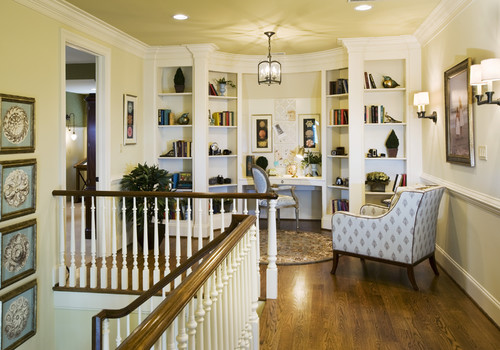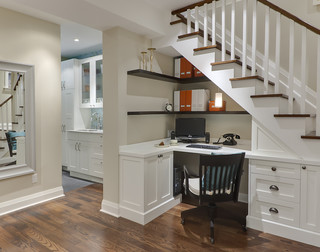By LISA BOONE — Los Angeles Times
It happened by accident. When Kurtis and Wanda Weller Sakai went to remodel their 1971 Ojai, Calif., ranch house, the original plan was to add a fourth bedroom for Kurtis to use as an office.
“We realized that if we went over 500 square feet, the add-on permits would get very expensive,” Kurtis said.
A new master suite consumed much of that square footage, so architect Darwin McCredie’s shifted gears and added to the front of the house a compact 14-by-14-foot office – no bathroom, no walk-in closet, to stay under that magic number of 500.
The result is a work space that feels apart from the rest of the house, a quality enhanced by the fact that the office is accessible only by an exterior door at the end of a long covered porch.
“It feels a little funny going out there in my pajamas sometimes,” said Kurtis, a designer of athletic footwear for clients such as Teva and Patagonia. But as someone who always had worked out of a spare bedroom, he now finds the separation that comes with the new office to be a revelation. “The detachment feels serious.”
And that is the point: At a time when so many people are bringing the office home, there’s a growing desire for more separation, physical and psychological, between work and personal life. One of the most recent surveys on the subject, by the project management software company Wrike, found that, among 1,000 respondents, 83 percent worked from home at least part of the day.
“It is such a pleasant thing to truly have a sense of separation,” Kurtis said. “My office might as well be down the street. It’s a physical and mental space where I keep all of my problems. You can truly forget about your work and not have it stare at you while you’re walking down the hallway.”
At a home tour organized by the American Institute of Architects’ Los Angeles chapter last month, three of the five homes had a detached office. It’s an increasingly common solution for L.A.’s creative class, including architects.
“Architects are very happy about this solution as they reduce overhead costs and have the opportunity to spend more time with their family,” said Carlo Caccavale, associate director of the Los Angeles AIA.
Bill Beauter, co-founder of Make Architecture in Los Angeles, designed a 200-square-foot detached work space for “The Office” actor Rainn Wilson. The architect recalled starting his practice a dozen years ago with Jess Mullen-Carey out of Beauter’s garage.
“There are benefits to not having to go anyplace, especially if you want to tackle something immediately,” Beauter said. “But some people just don’t want to encumber their personal space.”
For many, an office at home but not in the home is proving to be the best way to reconcile work and family life. Filmmaker and commercial director John Dolan said he chose a detached structure in his Studio City, Calif., backyard even though he could work in an office in Hollywood. He likes the quiet and privacy. He also likes being by his two boys, ages 4 and 5.
“That is the biggest challenge of working from home,” Dolan said. “Being in a detached space helps a lot. But it’s hard for the kids to understand that I’m working.” A plus: “being able to have lunch with them and clear my head by jumping on the trampoline with them.”
Developer Billy Lehman recently installed a K4 Kithaus, a prefab design often used as an extra bedroom or office, in the Brentwood backyard of a writer-producer couple with kids. The couple found it was impossible to get work done in the home, so they added a dedicated building in back.
Lehman and wife Dana Goodyear, a writer for the New Yorker, work from home in a separate structure too.
“The psychological journey to walk from the house to the guest house is gigantic,” Lehman said. “We bring our work as close to where our heart life is. Working from home has been amazing for me. For the last 19 months I can see my baby whenever I want. It gives me great purpose and motivation in my work.”
POCKET OFFICES ARE THE LATEST SPACE VENTURE
One of the biggest trends in new residential design, according to the National Association of Home Builders, is the pocket office – a small space devoted to paying bills, budgeting and other household affairs.
Pocket offices generally are about half the size of a formal home office. They’re often set up in high traffic areas such as the kitchen or a great room, where family members interact. In the Ojai home of Kurtis and Wanda Weller Sakai, Kurtis’ separate work room is complemented by an alcove pocket office that Wanda uses just off the living room.
Given the shrinking size of technology – from desktop computer to laptop and now to tablet – a large home office no longer makes sense for many households. That’s been particularly true in this real estate slump, which has forced families to make the most of limited space rather than trade up to a larger home.
Another factor driving the trend: the growth of multigenerational living. Bedrooms that in years past would have been converted into home offices are increasingly being used as living quarters for extended family.



